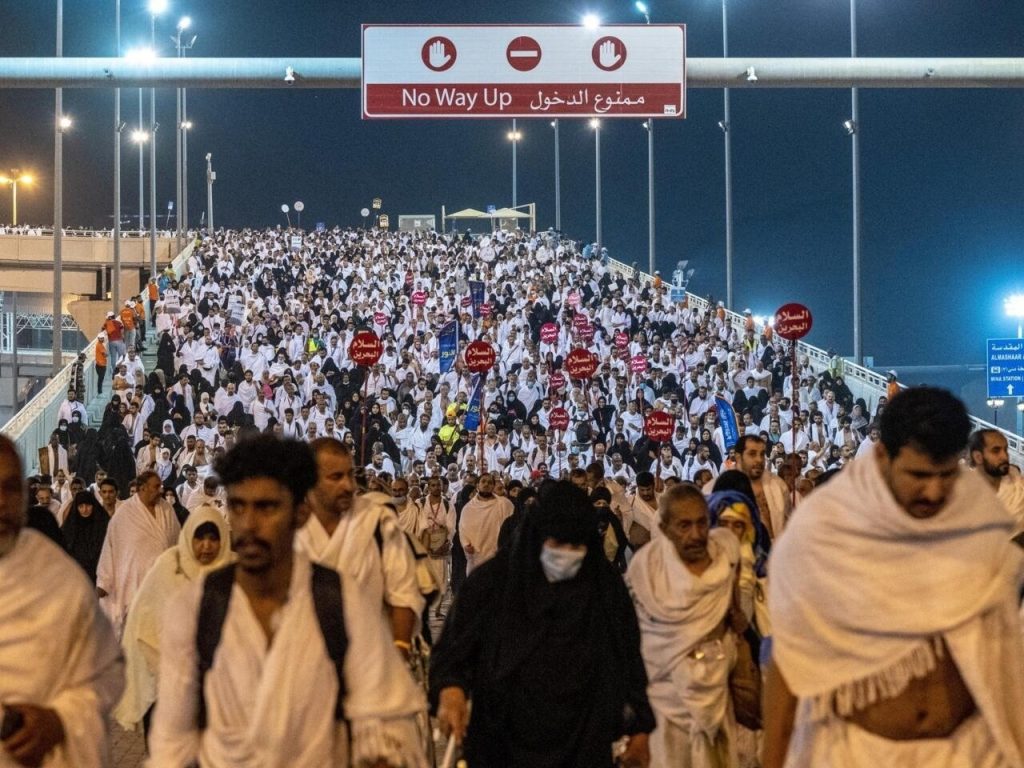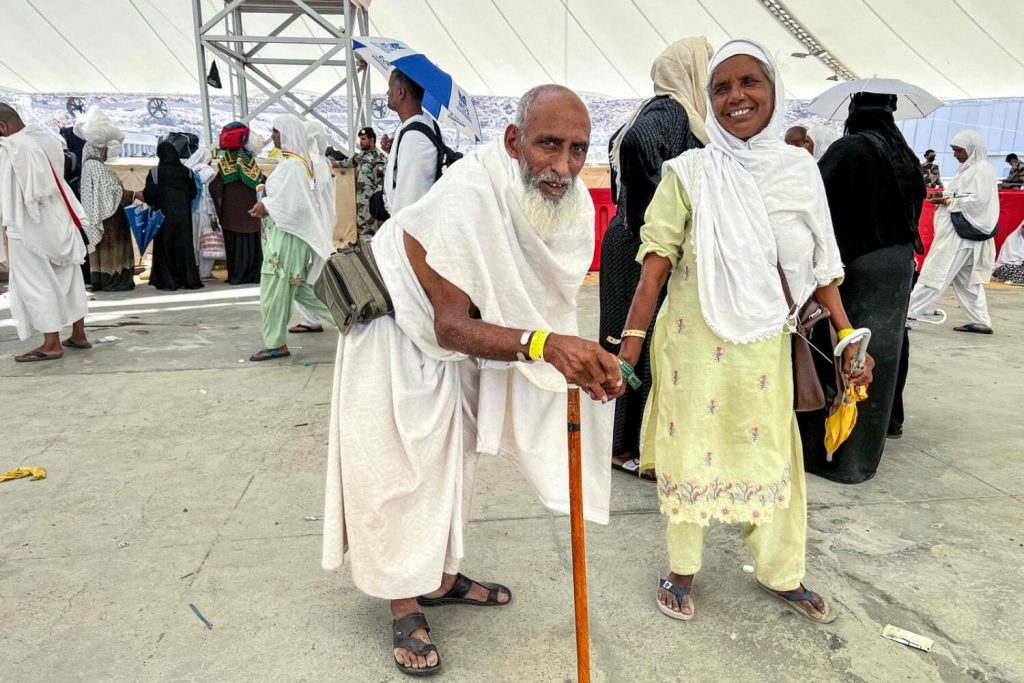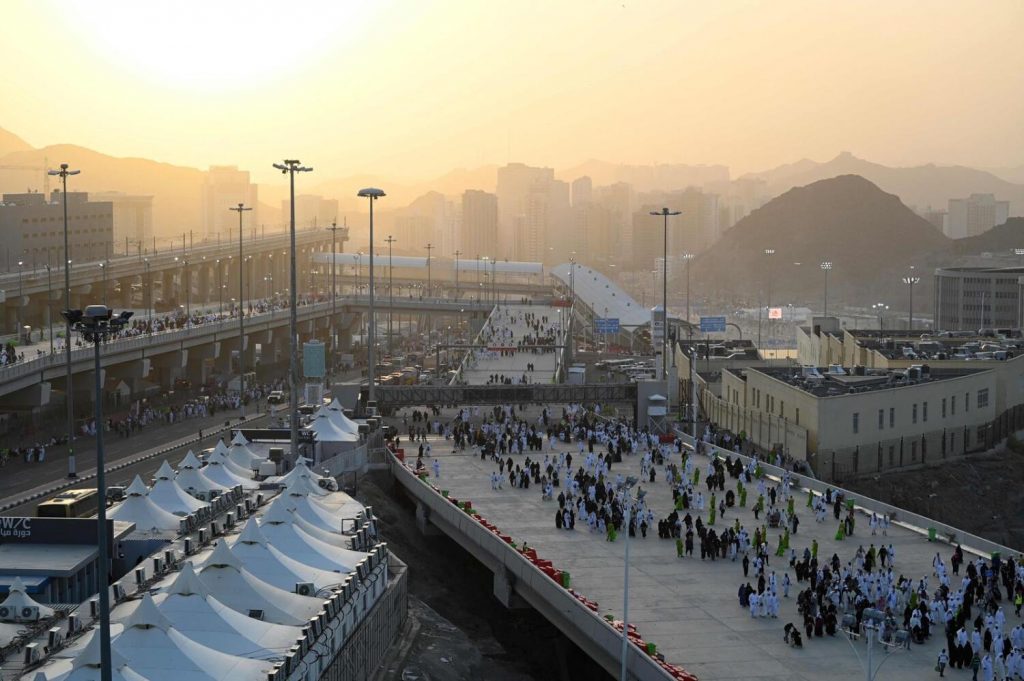More than 2.5 million pilgrims continued on Thursday, June 29, the symbolic stoning of the devil braving intense heat.
The first day of the three-day stoning ritual began Wednesday, June 28, the first day of `Eid Al-Adha, at Jamrat Al-Aqaba.
Chanting “Allahu Akbar (God is Greatest),” crowds of pilgrims advanced in waves around Jamrat al-Aqaba, the largest of three adjacent pillars, pelting Jamrat Al-Aqabah.
📚 Read Also: Don’t Feel Like Celebrating This Eid?
In Mina, some sought shelter from the sun by lying under parked trucks, while civil defense volunteers inspected tents to check on pilgrims.
“I will not think of doing hajj again until it takes place in winter,” Farah, a 26-year-old Tunisian who did not want to give her full name, told AFP. “My body is melting,” she added.
Pilgrims hurl seven pebbles from behind a fence or from an overhead bridge every day for three days at each of the three 18-meter (58-foot) high concrete pillars symbolizing the devil.
📚 Read Also: Slaughtering Sheep on Eid Day: Cruelty to Animals?
Muslims believe Satan appeared on the same site to Prophet Abraham, son Isma’il, and wife Hagar, who each threw seven stones at the devil.
After the stoning ceremony, the pilgrims head to Makkah for Tawaf Al-Wadaa.
Muslims from around the world pour to Makkah every year to perform hajj, one of the five pillars of Islam.
Hajj consists of several ceremonies which symbolizes the essential concepts of the Islamic faith. They also commemorate the trials of Prophet Abraham and his family.
Every able-bodied adult Muslim who can financially afford the trip must perform hajj at least once in a lifetime.





